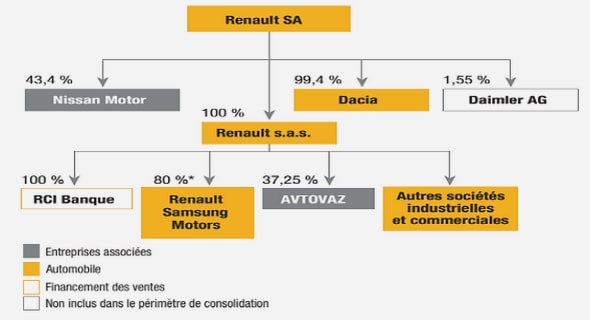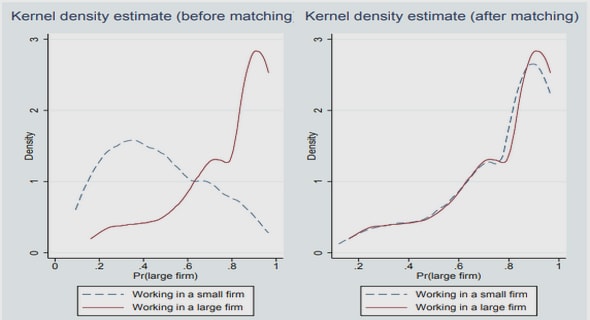Get Complete Project Material File(s) Now! »
STRUCTURAL TOPOLOGY OPTIMIZATION 3
On the other hand, shape optimization generally involves finding the analysis domain shape which optimally performs a given function, subject to certain constraints. The design domain is usually determined parametrically by the design variables. If gradient based optimization methods are employed, considerable difficulties would be encountered if holes were to merge during the process, and it is certainly not a trivial task to determine the effect of adding or removing holes a priori, or indeed to determine where to introduce additional holes if necessary. Therefore, during this process the topology is generally fixed. For example, in the shape optimization illustration in Figure 1.1, the starting design has three holes and the final design also has three holes.
Initial design and design parameterization
The first step in the process is to select an initial or starting design. This design could be based on the experience of the designer, but could also simply be randomly selected within a given design domain or could be the result of a previous (more general) optimization procedure. At this stage the parameters that describe the design, and which will be allowed to change during the process (the design variables, x) are defined. The initial design is accordingly described by an initial design vector x 0 . The type of parameterization chosen will dictate (or is dictated by) the type or category of structural optimization that is employed. The design variables used in topology optimization typically describe the material distribution within the design domain using a density function.
Background to the study
Arguably one of the most popular and immediately useful applications of structural topology optimization is in the synthesis of compliant mechanisms. Whereas traditional mechanisms employ rigid links connected by movable joints, compliant mechanisms are mechanical de- vices used to transfer or transform motion, force or energy via mobility gained through the deflection of flexible members. Manually designing compliant mechanisms to carry out all but the simplest of tasks is a challenging exercise. Therefore, finite element modelling and topology optimization have become increasingly useful design tools of late. Compliant mechanisms have a number of advantages over conventional jointed mechanisms. For example, they have fewer moving parts, reducing or eliminating backlash, play, noise as well as weight. Furthermore, compliant mechanisms are easily miniaturized making them ideal for use in Micro Electro Mechanical Systems (MEMS) or precision engineering appli- cations where smart materials are regularly used as transducers. Piezoelectric materials in particular are very attractive as actuator smart materials for com- pliant mechanisms due to their high energy density, large force capacity and excellent oper- ational bandwidth.
However their low induced strain (typically in the order of 0.1−0.2%2 ) means that output displacements are small, limiting their direct application. To convert these small induced strains to usable displacements, piezoelectric ceramics commonly em- ploy some form of mechanical amplification. Often, this mechanical amplification takes the form of a compliant mechanism. In 2003 the Department of Mechanical Engineering, and in particular the Structural Opti- mization Research Group (SORG) at the University of Pretoria, and the Centre for Inte- grated Sensing Systems (CISS)3 at the Council for Scientific and Industrial Research (CSIR) in South Africa became jointly involved in a project aimed at investigating the development of novel finite elements and structural optimization techniques for application in compliant, piezoelectrically actuated, micropositioning systems. The goal of this study was to develop accurate finite elements, or procedures used in their calculation, which could be used for (but are not limited to) the modelling of piezoelectri- cally driven compliant mechanisms. Furthermore, the study aimed to show how the salient features of these specially developed finite elements and procedures could be exploited in a topology optimization environment to overcome common numerical instabilities such as checkerboarding. In the remainder of this section a very brief background to relevant topics in topology optimization and the finite element method, is presented.
Topology optimization
In topology optimization, there are several acknowledged fundamental, theoretical issues which need to be appropriately addressed if sensible results are to be achieved [13]. These issues include non-existence of the solution (mesh dependency), multiple local optima, and non-uniqueness of the solution. Firstly, it is well known that the 0-1 problem statement in topology optimization lacks exis- tence of solution in a continuum setting [4]. This problem exists due to a lack of closedness of the set of admissible designs.4 In a discrete (finite element) setting, this problem manifests itself as a mesh dependency problem. One possible way to deal with this problem is to a priori allow composite materials constructed from the original isotropic material (and void). This method extends the design space and sufficiently relaxes the original problem. Alter- natively, the design space can be restricted by limiting local or global variations in material distribution, thereby sufficiently closing the the set of admissible designs. Another common complication is that of multiple (local) optima. If one observes the many different optimal solutions which have been published for benchmark problems, for example the well known MBB beam problem, it is clear that there are many local optima present. This is due to the fact that most topology optimization problems are non-convex.
Unfortu- nately, there is no way to overcome this problem, although a popular method to alleviate non-convexity is the use of continuation methods. Continuation methods gradually change problems from artificial (strictly) convex, or nearly convex, problems to the original non- convex problem. Finally, problems with multiple globally optimal solutions are termed non-unique. An ex- ample commonly cited is that of a structure under uniaxial tension, in which only the cross-sectional area is of importance and not the topology. The only sensible way to deal with this problem is to impose manufacturing preference constraints. Unfortunately these fundamental issues cannot be resolved solely through the use of finite element technology, no matter how sophisticated the finite element. Therefore attention in this study is rather focused on problems which occur locally in material distributions, and which can be attributed to the numerical deficiencies of the finite element model, such as checkerboarding and one-node connected hinges. The checkerboarding problem is characterised by material in ‘optimal topologies’ being dis- tributed in alternating solid and void elements, similar to the pattern created by the squares on a checkerboard.
Checkerboarding is largely a result of poor numerical modelling of this spurious material distribution, as shown by D ́ıaz and Sigmund [14]. In essence, the numerical behaviour of this material distribution is over-stiff and is therefore especially common in the solutions of minimum compliance problems. The one-node connected hinge is characterised by four elements surrounding a node, where two diagonally opposite elements are solid and the other two are void, see for example Poulsen [15]. This material distribution is somewhat common in the design of compliant mechanisms such as those for which this work is ultimately aimed. This is due to the fact that in compliant mechanism design, solid state hinges are employed to achieve the required motion and the numerical model of a one-node hinge employing standard elements is ideal (albeit unrealistic) since it offers zero resistance to rotation about the common node. For a more detailed introduction to the topology optimization problem, the reader is referred to Appendix A.
Contents :
- Summary
- Acknowledgements
- List of Figures
- List of Tables
- 1 Introduction
- 1.1 Structural topology optimization
- 1.2 Background to the study
- 1.2.1 Topology optimization
- 1.2.2 The finite element method
- 1.3 Objectives of the study
- 1.4 Thesis overview and list of contributions
- Part 1: Finite Element Development and Technology
- 2 Stability of elastostatic elements with drilling degrees of freedom
- 2.1 Summary
- 2.1.1 A word on notation
- 2.2 Introduction
- 2.3 Historical development of elements with drilling DOFs
- 2.4 Variational formulation of elements with drilling DOFs
- 2.5 Finite element interpolation
- 2.6 Stability analysis
- 2.7 Consistency and stability
- 2.8 Numerical experiments
- 2.8.1 Cook’s membrane
- 2.8.2 Cantilever beam subjected to end shear
- 2.8.3 Orthotropic membrane cantilever
- 2.9 Conclusions
- 3 Piezoelectric elements with drilling degrees of freedom
- 3.1 Summary
- 3.1.1 Another brief word on notation
- 3.2 Introduction
- 3.3 Governing equations
- 3.3.1 Constitutive equations
- 3.3.2 Compatibility conditions
- 3.3.3 Equilibrium conditions
- 3.3.4 Rotational momentum balance conditions and definition of infinitesi mal rotation
- 3.4 Variational formulation
- 3.4.1 Hu-Washizu-like variational formulations
- 3.4.2 Irreducible formulations
- 3.4.3 Fully mixed Hellinger-Reissner-like formulations
- 3.4.4 Degenerate Hellinger-Reissner-like formulations
- 3.4.5 Relationships between the functionals
- 3.5 Finite element interpolations
- 3.6 Finite element implementation
- 3.6.1 Irreducible piezoelectric elements with drilling DOFs
- 3.6.2 Fully mixed piezoelectric element with drilling DOFs
- 3.6.3 Degenerate assumed flux density piezoelectric element with drilling DOFs
- 3.6.4 Degenerate assumed stress piezoelectric elements with drilling DOFs
- 3.7 Partitioned stiffness matrices
- 3.8 Numerical evaluation
- 3.8.1 Effect of γ
- 3.8.2 Eigenvalue analysis
- 3.8.3 Patch test
- 3.8.4 Two element beam
- 3.8.5 Ten element beam
- 3.8.6 Cook’s membrane
- 3.8.7 Piezoelectric bimorph beam
- 3.9 Conclusions
- 4 Modified reduced order quadratures for quadratic membrane elements
- 4.1 Summary
- 4.2 Introduction
- 4.3 Derivation of numerical integration schemes
- 4.3.1 A five point rule
- 4.3.2 An eight point rule
- 4.4 Numerical evaluation
- 4.4.1 Eigenvalue analysis
- 4.4.2 Effect of element aspect ratio
- 4.4.3 Cantilever beam in pure bending
- 4.4.4 A near mechanism
- 4.4.5 Highly constrained square plate
- 4.4.6 Cook’s membrane
- 4.5 Conclusion
- Part 2: Applications of Finite Element Technology in Topology Opti mization
- 5 New schemes to deal with problematic material layouts
- 5.1 Summary
- 5.2 Introduction
- 5.3 Elements with drilling degrees of freedom
- 5.4 Problem formulations
- 5.4.1 The minimum compliance topology optimization problem using SIMP
- 5.4.2 Comments on checkerboarding
- 5.4.3 Compliant mechanism design using topology optimization and SIMP
- 5.4.4 Mirror scanning design using topology optimization and SIMP
- 5.5 Schemes to prevent checkerboarding and one-node hinges
- 5.5.1 Scheme I: A modified scheme based on NoHinge
- 5.5.2 Scheme II: A new scheme to improve checkerboard, one-node hinge and diagonal member modelling
- 5.6 Numerical examples and applications
- 5.6.1 Application of Scheme I
- 5.6.2 Application of Scheme II
- 5.6.3 Discussion of results
- 5.7 Conclusions
- 6 Effect of element formulation on membrane, plate and shell topology op- timization problems
- 6.1 Summary
- 6.2 Introduction
- 6.3 Topology optimization problem formulation
- 6.3.1 Material parameterization
- 6.3.2 Layer models
- 6.3.3 Problem formulation and sensitivities
- 6.3.4 Design update and filtering strategies
- 6.4 Finite element formulations
- 6.4.1 Membrane elements
- 6.4.2 Plate elements
- 6.4.3 Membrane-bending components
- 6.4.4 Warp correction and local-global transformation
- 6.4.5 Shell element denotation
- 6.5 Numerical Examples
- 6.5.1 Membrane example
- 6.5.2 Analysis of membrane results
- 6.5.3 Plate examples
- 6.5.4 Analysis of plate results
- 6.5.5 Shell examples
- 6.5.6 Analysis of shell results
- 6.6 Conclusions
- 7 Effect of reduced order integration schemes on the stiffness of checkerboard patterns in topology optimization
- 7.1 Summary
- 7.2 Introduction
- 7.3 Modified reduced order quadrature integration rules
- 7.3.1 Numerical integration schemes
- 7.3.2 A five-point rule
- 7.3.3 An eight-point rule
- 7.4 Elements with drilling degrees of freedom
- 7.5 On the stiffness of a checkerboard patch of elements
- 7.5.1 Topology optimization using homogenization
- 7.5.2 Effective properties of a checkerboard
- 7.6 Numerical results
- 7.6.1 Effect of element formulation on local χ field
- 7.6.2 Effect of element selection and integration scheme on effective properties of a checkerboard
- 7.6.3 Effect of integration scheme on strain energy density of quadratic elements
- 7.6.4 Effect of integration scheme on penalty bounds p
- 7.7 Conclusions
- 8 Conclusion
- 8.1 PART I: Development of finite element technology
- 8.2 PART II: Application of F.E. to topology optimization
- 8.3 Suggested future work
- Bibliography
- A A brief introduction to topology optimization
- A.1 Implementional issues
- A.1.1 Mesh dependency
- A.1.2 Checkerboarding, one-node connected hinges
- A.1.3 Other complications
- A.2 Compliant mechanism design
- B Additional plate and shell results
- B.1 Additional membrane results
- B.1.1 MBB beam
- B.2 Additional plate results
- B.2.1 Simply supported square plate with centre point load
- B.2.2 Clamped square plate with centre point load
- B.2.3 Corner supported square plate with centre point load
- B.2.4 Corner supported square plate with distributed load
- B.3 Additional shell results
- B.3.1 Cylindrical shell
- B.3.2 Pretwisted beam


